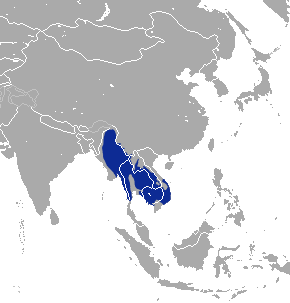Facts About Burmese hare
The Burmese hare is a fascinating mammal from the Leporidae family, found across Cambodia, Laos, Myanmar, Thailand, and Vietnam. This species is divided into three subspecies: L. p. peguensis, L. p. siamensis, and L. p. vassali.
In terms of size, the Burmese hare is relatively small, with adults typically measuring between 35 to 50 centimeters in length and weighing about 2 to 2.5 kilograms. It has several distinctive features, including black-tipped ears, a reddish-grey body, white underparts, and a tail that is both white and black.
The Burmese hare's habitat ranges from southern Myanmar to the Malay Peninsula, encompassing Thailand, Cambodia, Laos, and Vietnam. While it primarily inhabits lowland areas, it has been observed at elevations up to 1,300 meters. These hares thrive in diverse environments such as croplands, dry wastelands, forests, coastal sandy areas, riverside flats, and traditional rice fields.
This nocturnal creature feeds on a diet of grass, twigs, and bark. It is quite prolific, giving birth to several litters each year, with each litter typically consisting of three to four young after a gestation period of around 37 days. The Burmese hare can live up to six years.
However, the Burmese hare faces threats such as habitat loss due to the expansion of irrigated rice paddies and hunting for food. Despite these challenges, its wide distribution and stable or even increasing populations in some regions have earned it a "Least Concern" status from the International Union for Conservation of Nature (IUCN).

 Myanmar (Burma)
Myanmar (Burma)